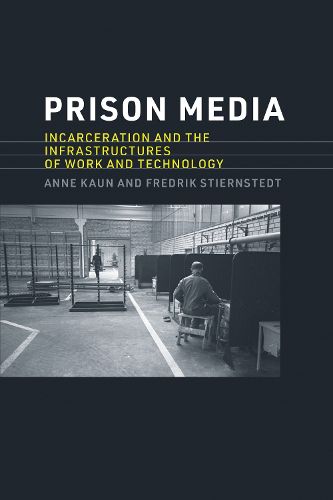Readings Newsletter
Become a Readings Member to make your shopping experience even easier.
Sign in or sign up for free!
You’re not far away from qualifying for FREE standard shipping within Australia
You’ve qualified for FREE standard shipping within Australia
The cart is loading…






How prisoners serve as media laborers, while the prison serves as a testing ground for new media technologies.
Prisons are not typically known for cutting-edge media technologies. Yet from photography in the nineteenth century to AI-enhanced tracking cameras today, there is a long history of prisons being used as a testing ground for technologies that are later adopted by the general public. If we recognize the prison as a central site for the development of media technologies, how might that change our understanding of both media systems and carceral systems? Prison Media foregrounds the ways in which the prison is a model space for the control and transmission of information, a place where media is produced, and a medium in its own right.
Examining the relationship between media and prison architecture, as surveillance and communication technologies are literally built into the facilities, this study also considers the ways in which prisoners themselves often do hard labor as media workers-labor that contributes in direct and indirect ways to the latest technologies developed and sold by multinational corporations like Amazon. There is a fine line between ankle monitors and Fitbits, and Prison Media helps us make sense of today’s carceral society.
$9.00 standard shipping within Australia
FREE standard shipping within Australia for orders over $100.00
Express & International shipping calculated at checkout
How prisoners serve as media laborers, while the prison serves as a testing ground for new media technologies.
Prisons are not typically known for cutting-edge media technologies. Yet from photography in the nineteenth century to AI-enhanced tracking cameras today, there is a long history of prisons being used as a testing ground for technologies that are later adopted by the general public. If we recognize the prison as a central site for the development of media technologies, how might that change our understanding of both media systems and carceral systems? Prison Media foregrounds the ways in which the prison is a model space for the control and transmission of information, a place where media is produced, and a medium in its own right.
Examining the relationship between media and prison architecture, as surveillance and communication technologies are literally built into the facilities, this study also considers the ways in which prisoners themselves often do hard labor as media workers-labor that contributes in direct and indirect ways to the latest technologies developed and sold by multinational corporations like Amazon. There is a fine line between ankle monitors and Fitbits, and Prison Media helps us make sense of today’s carceral society.